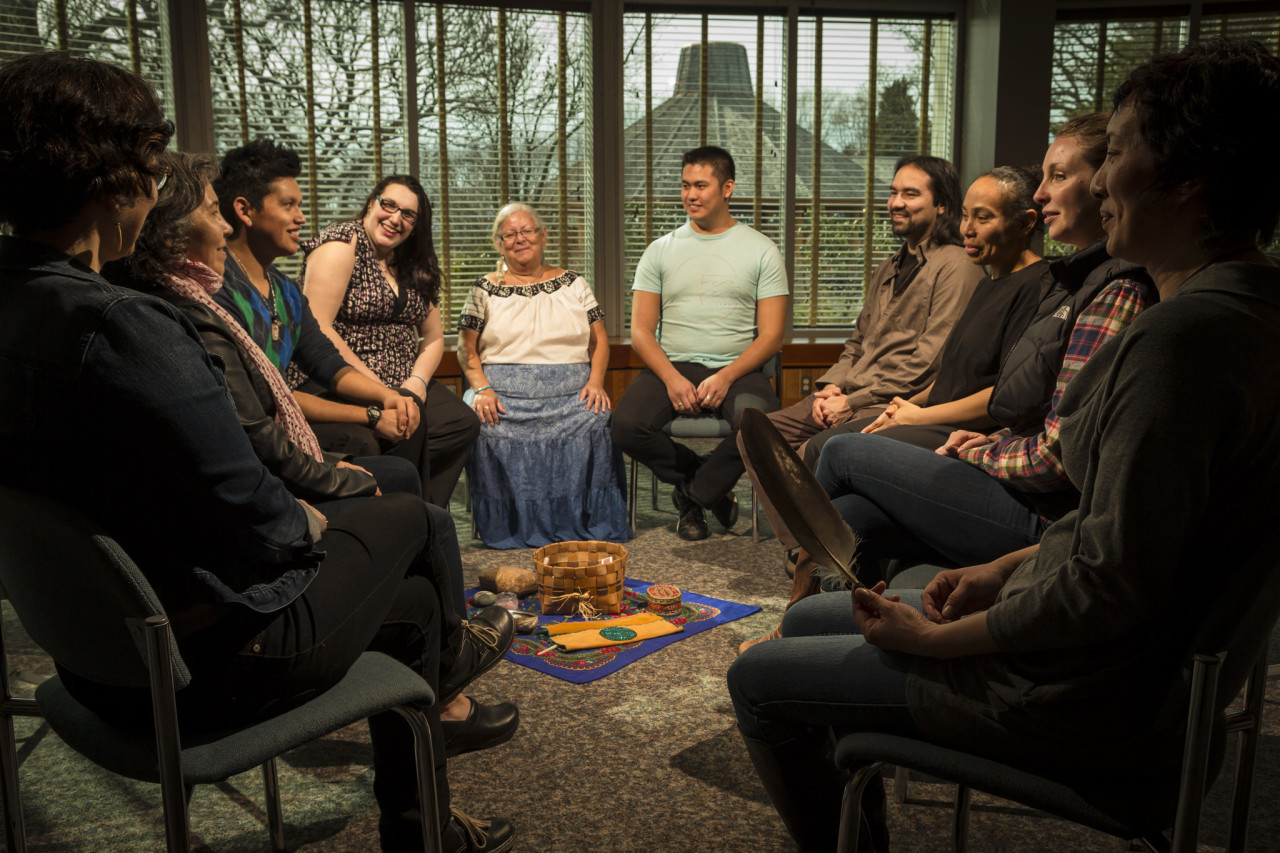Across the college, the territorial acknowledgement has become part of our practice to honour, respect, and acknowledge relationships with First Nations and Indigenous peoples of this place.
Camosun College serves the communities of southern Vancouver Island and the southern Gulf Islands that are located in the territories of the Lək̓ʷəŋən (Songhees and Kosapsum), Malahat, Pacheedaht, Scia'new, T’Sou-ke and W̱SÁNEĆ (Pauquachin, Tsartlip, Tsawout, Tseycum) peoples.
Territorial acknowledgements are rooted in First Nation protocols and guide us in how we interact and respect one another. Providing a territorial acknowledgement is a way for us, as visitors, to thank and acknowledge the caretakers of the places where we work, live and play. A territorial acknowledgement is an opportunity to recognize our connections and our responsibilities to one another.
Indigenous voice and presence have been hidden and marginalized for too long. We are now seeing a resurgence and reclaiming of indigeneity and self determination. Acknowledging territory is a component of the processes of Indigenization, decolonization and reconciliation; providing the foundation to rebuild trusting and just relationships.
Camosun’s Strategic Plan situates Indigenization as a core value for relating with all students and recognizes our educational relationship with Indigenous communities.
Acknowledgement or welcome
It is important to note the distinction between an acknowledgement and a welcome.
For some events, you may hear a territorial welcome from an Elder (an old one) or knowledge holder from the First Nation where the campus is situated. A traditional welcome is a way to greet visitors in a good way, with a good heart, mind and feeling.
A territorial acknowledgment is typically done by a visitor to the land. The college has adopted an acknowledgment that was developed in consultation with First Nations communities across the region: The Lekwungen (Esquimalt and Songhees), Malahat, Pacheedaht, Scia'new, T’Sou-ke and W̱SÁNEĆ (Pauquachin, Tsartlip, Tsawout, Tseycum) peoples.
Pronouncing 'Camosun'
More from the playlist

Broaden your knowledge
Programs, courses, and open education resources to help broaden your knowledge and insight into an Indigenous worldview.